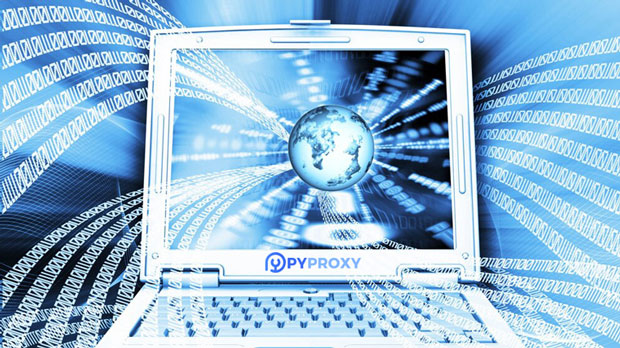When purchasing a residential static ip proxy, it is essential to understand the key indicators that directly influence the performance, security, and reliability of the proxy service. These proxies are often used for various purposes such as web scraping, online marketing, and managing multiple accounts without getting banned. Understanding these indicators will help in making an informed decision that aligns with specific business or personal needs. Key factors such as IP pool size, geographic location, speed, reliability, customer support, and security features must all be carefully assessed to ensure the best proxy solution is chosen. 1. IP Pool Size and DistributionOne of the most important factors when purchasing a residential static IP proxy is the size and distribution of the IP pool. A large and diverse IP pool provides several advantages, such as increased anonymity and a reduced likelihood of encountering IP blocks or bans. The larger the pool, the less likely your activities will be associated with a single IP address, providing enhanced protection against detection and blocking.The distribution of IP addresses across different geographic regions is also critical. If you need to access content from specific countries or regions, ensuring that the proxy provider offers IPs from those areas is essential. This will improve the success rate of tasks such as web scraping or ad verification, where geographic targeting is often a key requirement.2. Connection Speed and LatencyAnother key consideration when choosing a residential static IP proxy is the connection speed and latency. These factors significantly affect the performance of your proxy, particularly when engaging in activities that require real-time data processing, such as online gaming, e-commerce, or competitive research. High latency can result in slow page loads, longer processing times, and a poor user experience overall.You should evaluate the average speed of the proxies provided by the vendor and determine if they meet your specific needs. Speed can vary depending on the provider’s infrastructure, so looking for a provider that guarantees consistent speeds and low latency is crucial. You should also verify that they offer high bandwidth, which ensures the proxy can handle high traffic volumes without slowing down.3. Proxy Reliability and UptimeReliability is another critical factor when selecting a residential static IP proxy. You rely on proxies for various online activities, from accessing geo-restricted content to managing multiple social media accounts. If the proxy goes down unexpectedly or experiences frequent downtime, it can disrupt your operations and cause delays.A reliable proxy service provider should offer a high uptime guarantee, preferably 99.9% or higher. It’s important to check if the provider has systems in place to ensure stability and a minimal risk of interruptions. Providers with backup systems, quick server switch capabilities, and monitoring tools can significantly reduce downtime, providing a more stable experience.4. Geo-Location CoverageGeo-location coverage is particularly important for users involved in tasks such as market research, SEO tracking, or content scraping, where the geographic location of the IP addresses directly influences results. Some proxy providers specialize in offering IPs from a wide range of countries, while others may only have a limited number of regions.When selecting a proxy, ensure that the provider offers the regions you need. For example, if your business focuses on European markets, having access to proxies from countries like Germany, France, or the UK is crucial. Be sure to check the specific country or regional coverage offered by the provider to ensure it aligns with your requirements.5. Customer Support and Technical AssistanceHaving access to excellent customer support is vital when using residential static ip proxies. Issues can arise at any time, from connection problems to configuration difficulties, and having reliable technical assistance can help resolve these issues quickly.Look for a provider that offers 24/7 customer support, preferably with multiple contact options, such as live chat, email, and phone support. Additionally, the quality of support is just as important as its availability. A helpful and knowledgeable support team can greatly reduce your frustration during issues, ensuring minimal downtime and smooth proxy usage.6. Security Features and Privacy ProtectionThe security of your data and privacy is a top concern when using residential static IP proxies. You are often conducting sensitive operations that require complete anonymity, whether scraping competitors’ websites, verifying ads, or managing accounts across multiple platforms. Ensuring that your proxy provider offers strong security features is crucial.Look for a provider that offers features such as data encryption, protection against DDoS attacks, and strict no-logs policies. The no-logs policy ensures that the provider does not store any records of your internet activity, which is essential for protecting your privacy. Additionally, providers with secure proxy configurations can help avoid potential vulnerabilities or risks to your data.7. Cost and Pricing PlansPricing is always a key factor when selecting any service, and residential static IP proxies are no exception. Different providers offer varying pricing plans depending on the number of IPs, geographic coverage, bandwidth, and additional features included.It is important to balance cost with the quality of service. While opting for cheaper options might be tempting, they could come with limitations such as slower speeds, fewer IPs, or poor support. Consider your specific needs and choose a pricing plan that provides good value for the service offered. Many providers also offer flexible payment plans, which can be a great way to scale your usage based on your needs.8. Provider Reputation and ReviewsBefore committing to a residential static IP proxy provider, it’s always wise to check the reputation of the service. Reading reviews and testimonials from other users can provide valuable insights into the provider’s performance, reliability, and customer service.Look for reviews on independent platforms or forums where real customers share their experiences. Positive feedback regarding uptime, customer support, and proxy performance can indicate a reliable provider. On the other hand, consistent negative reviews should serve as a warning sign to consider other options.When purchasing a residential static IP proxy, it’s important to evaluate several key indicators to ensure that the service will meet your needs. Factors such as IP pool size, geographic distribution, connection speed, reliability, security, customer support, and pricing must be carefully analyzed to make an informed decision. By considering these indicators, you can choose a provider that offers a high-quality, secure, and reliable service, enabling you to perform your online activities with confidence.
Sep 16, 2025


































































